#Create custom blog WordPress
Explore tagged Tumblr posts
Text
youtube
#wordpress#affiliate program#WordPress custom blog#Add blog to WordPress#WordPress blog customization#Custom blog design#WordPress blog setup#WordPress blog tutorial#WordPress blog layout#WordPress themes for blogs#Create custom blog WordPress#Blogging tips for WordPress#WordPress blog page#Custom blog section#WordPress blog plugins#Blog design ideas#WordPress beginner guide#Custom blog post layout#WordPress blog features#WordPress for blogging#Custom WordPress blog tutorial#WordPress design tips#Blog customization WordPress#Youtube
0 notes
Text
7+ Best Art Portfolio Website WordPress Premium Theme

Art Portfolio Website WordPress Premium Theme
Creating an art portfolio website is essential for artists, designers, and creatives to showcase their work and attract potential clients. Let’s explore some of the best WordPress premium themes specifically designed for art portfolio websites:
1. Dabble – Creative Agency & Portfolio WordPress Theme:

A sophisticated and stylish theme with multiple menu layouts, sliders, and preset blog post styles.
Features a portfolio system using a custom post type, allowing you to display your projects effectively.
Available in both free and premium versions, with advanced controls in the premium version.
2. Rubrash – Personal Portfolio WordPress Theme:

Known for its rock-solid coding and fantastic support.
Offers full-width portfolio layouts, including checkerboard style and carousel options.
Utilize the drag-and-drop Elementor Builder to create stunning pages for each portfolio entry.
3. Swipy – Creative Agency WordPress Theme:
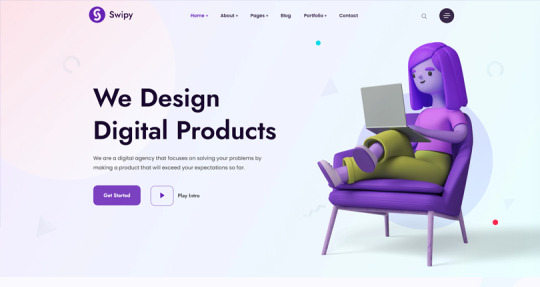
A flexible and feature-rich theme powered by the Elementor page builder plugin.
Suitable for various types of websites, including art portfolio website.
Explore its extensive library of over 300 templates for startups, freelancers, and personal sites.
4. Kulluu – Creative Agency WordPress Theme:
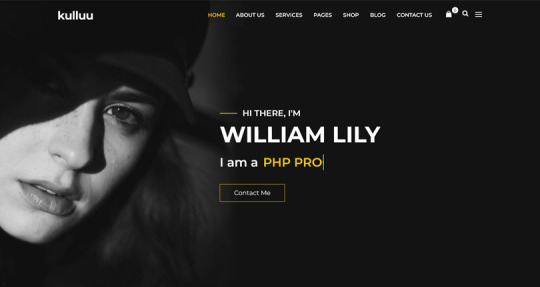
A minimalist freelancer and agency portfolio theme.
Ideal for showcasing your work with a clean and modern design.
5. Bionic- Personal Portfolio WordPress Theme:

Another portfolio WordPress theme that emphasizes simplicity.
Perfect for artists, photographers, and creative professionals.
6. Cretic – Creative Agency WordPress Theme:

A multi-concept artist and creative agency theme.
Offers versatility and a variety of options for different types of art portfolio website.
7. Mifo – Creative Minimal Portfolio WordPress Theme:

A clean and minimal multipurpose theme suitable for art portfolio website.
Focuses on elegant design and typography.
Remember to choose a theme that aligns with your artistic style, provides an excellent user experience, and effectively showcases your work. Happy creating! 🎨🖌️
For more options, you can explore other themes from ThemeForest. Each of these themes has unique features and customization options to suit your specific needs.
#premium wordpress themes#premium wordpress theme#app landing wordpress theme#wordpress premium themes#education wordpress theme#education & online course wordpress theme#paid wordpress themes#consulting business wordpress theme#online learning wordpress theme#wordpress plugins#art portfolio website#Art Portfolio Website WordPress Premium Theme#Creating an art portfolio website is essential for artists#designers#1. Dabble – Creative Agency & Portfolio WordPress Theme:#A sophisticated and stylish theme with multiple menu layouts#sliders#and preset blog post styles.#Features a portfolio system using a custom post type#allowing you to display your projects effectively.#Available in both free and premium versions#with advanced controls in the premium version.#2. Rubrash – Personal Portfolio WordPress Theme:#rubash#Known for its rock-solid coding and fantastic support.#Offers full-width portfolio layouts#including checkerboard style and carousel options.#Utilize the drag-and-drop Elementor Builder to create stunning pages for each portfolio entry.#3. Swipy – Creative Agency WordPress Theme:#swipy
4 notes
·
View notes
Note
Hi there! I've recently taken more of an interest in Hellenism, but I don't at all know where to start. I've never really been religious before, only really knowing the basics of Christianity. I did see you created a post of advice for beginner Hellenists, but I was wondering, if it's not too much trouble, if you had any additional information for someone like me who's just starting out.
Hello anon! Sorry for how long it took to write this up, I definitely went a little bit wild on this one :)
First off, welcome to Hellenic Polytheism! It's definitely a wild ride, but depending on what sect of Christianity you come from, it's not completely and totally foreign.
Starting off with a list of some websites, general resources, and accounts that I have found helpful:
theoi.com
Apostolos Athanassakis translations of the Orphic and Homeric Hymns
Hellenic Polytheism: Household Worship by Labrys
Hellenion.org
@khaire-traveler's Subtle Worship Master List
@thegrapeandthefig's Wordpress
And now breaking them all down, because I love when people justify their choices to me :)
theoi.com The nice thing about this website is that it's about as much information about the Gods as you can possibly want in one place. Not only does it seemingly have just about every possible deity in the Greek pantheon, but it has an incredibly good collection of historical references, family trees, and even artwork from ancient Greece.
Apostolos Athanassakis translations While theoi.com is good, I'm not the biggest fan of the version of the translations that they use for the Orphic and Homeric Hymns - they're a bit too "translated" for me. This meaning that the translations in question don't sit too close to the original text, and in my opinion, if you're trying to understand a deity through some ancient work, you want to get the closest translation to the original, even if that means sacrificing some of the flowery language. And Athanassakis' translations are some of my favorite for those "close translation" hymns. You can find his work on the Internet Archives.
Hellenic Polytheism: Household Worship I think this is one of those staples that every Hellenic Polytheist should take a look at at least once. It's pretty dry, but within it, there are plenty of rituals and general information on Hellenism as a religion. I don't use most of the rituals in it, but even still, I keep a copy on hand for the future when I'm able to practice more freely.
Hellenion.org This is a pretty good resource for more modern Hellenic Polytheist prayers, as well as rituals. This is a more heavy reconstructionist lean (which focuses on an accurate recreation of Hellenic Polytheism, as opposed to revivalism, which focuses on recreating it for the modern day), but still incredibly helpful, and a bit easier to understand than Hellenic Polytheism: Household Worship.
@khaire-traveler's subtle worship masterlist Honestly, if a resource like this existed when I was first starting out, I would be light years ahead of where I am now. Stag has managed to fit just about every idea you'd need to get started with worship/offerings into an easy-to-digest format, and I find myself going back to it time and time again when I start incorporating a new deity into my practice.
@thegrapeandthefig's Wordpress I don't even think I could summarize how amazing Aurora is into one little paragraph. There's everything on her Wordpress from historical offerings, to modern festivals, to dissections of various ancient customs. One of the things which has helped me the most from her blog has been her Attic calendar, which shows the schedule of the various religious observations throughout the year (and there are a lot).
Finally, a few extra words of advice that I might not have included in my original post that you mentioned in the ask:
Try to have one prayer memorized for each deity, if you're easily able to memorize things. Chances are, after about a year or so, you'll probably have a prayer or two that you really like and will have memorized because you've said it enough (I definitely have my fair share). And there's definitely something nice about finding yourself in a situation that reminds you of your deity and being able to just rattle off a prayer.
Try to avoid TikTok for your spiritual knowledge. But, if you want to add a bit of Hellenic flair to your FYP, I'd recommend Bria Melitta and hesiodic (who's also on here and maybe on TikTok as well [I might be wrong, haven't been on TikTok in a hot minute] under the name @olympianbutch). Both of these creators are really good, and I especially love Dagan for his devotion to Zeus, who often gets a bad rap from new practitioners because of behavior attributed to Him in myths.
Other than the resources I mentioned, some good stuff for casual reading would be: the Iliad and the Odyssey, any ancient Greek plays (I'd recommend starting with Aristophanes, if the tragedies are a bit too heavy), and Hesiod's Theogony.
And that's about all I can possibly think of throwing at you right now! I hope this came in handy, and as always, if you have more questions, please feel free to drop more in my ask box :) I'm always more than happy to answer questions and help to the best of my ability!
40 notes
·
View notes
Text
Shopify has a blog problem, this creates a really simple and straightforward opportunity for freelance designers/programmers
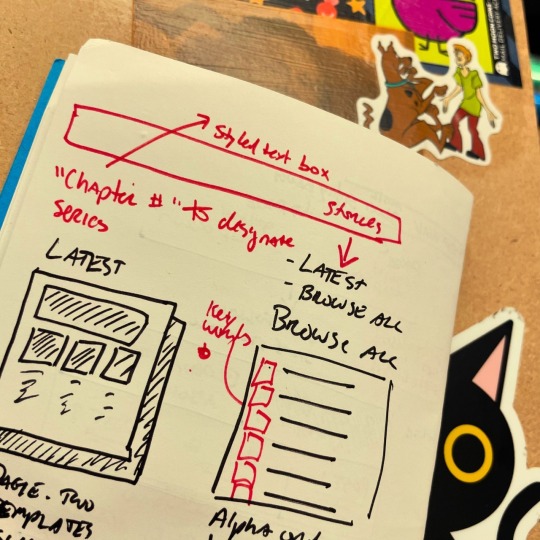
Earlier this year I settled the editorial decisions I needed for a lot of blogging going forward, and recently I've experimented (repeatedly) with the idea of having a blog on a separate platform, or using Shopify's system.
Having two sites would allow me to blog on a WordPress site, but creates... two sites, therefore complicates everything more. More maintenance, design, etc. etc.
I am actively seeking to make my life easier so I am foregoing two sites and learning to live with the limitations.
A personal struggle to the surprise of no one.

You can use WordPress and thread Shopify through it via the "buy" button, which is a shortcut for small stores and/or larger stores where you are very comfortable in WordPress.
You cannot use Shopify and thread WordPress through it.
Which is a shame.
Because Shopify's native blog platform is fucking horrible.

An independent graphic designer who can program, or a programmer who can design, cannot solve Shopify's problems.
They are inherent to the system and likely built on legacy code Shopify doesn't want to update because it'll cost a fortune.
I'll just be mad about this until the market forces them to address this opportunity and they revamp their blogging platform. That's fine.
Or maybe decades will pass and they won't. That's... fine too. I guess.

I am rambling this out because if I were in the business of freelance graphic design and/or programming I would jump on this immediately. I used to be and always shared opportunities with friends and it was fun and I kinda miss that aspect of the life.
I'm not in that business, and I have in-house programming, please don't pitch me, but do consider pitching... pretty much everyone with a Shopify site and a blog as Phase 01 of your plan, and everyone who has a Shopify site and does not have a blog as Phase 02 of your plan.
Here is what I would tackle:
Shopify blogs have two structures: "blog" and "blog post".
A blog in Shopify is essentially a category in WordPress, with more limitations, such as, a blog post can only be in a single "blog". That sucks but it means your life as a designer/developer gets more interesting.
Most Shopify themes come out of the box with 1 "blog" and 1 "blog post" template. They are exceptionally simple, usually. I would build a few test templates and offer them to clients "these will be modified to fit your direct style."
For some reason -- I'm guessing focus -- most blogs in Shopify have the image on top. If you structure "image on the left, image on the right" as options you can offer clients, you've just tripled their layout capabilities.
For another reason, I don't know why, but almost all shopify blog post templates I've seen do not have sidebars. Which is insane?! You can control that from the fucking "blog post" template so it would be an easy win.
You could work around the "a post can only be in one blog on Shopify" issue by having a sidebar that pulls the latest 3 (or 5 or whatever) posts as links for other blogs on the site: TEST SITE has 3 blogs. When you're looking at a post on BLOG 01, in the sidebar, you see a link to the latest post on BLOG 02 and BLOG 03. Similarly, when you're looking at a post on BLOG 02, the sidebar has the latest post from BLOG 01 and BLOG 03 (and so on)
The template I use, off the shelf, uses the Shopify's user name and details for the author of the blog. Once a blog post is created, in Shopify, you cannot alter the author. This is dumb as fucking rock salt on slug popcorn. But, again, systematic, I'm pitching ideas on ways around it -- exclude this and just use a CUSTOM DATA field to allow the Shopify owner to pick the relevant author. This cuts down on the need for extra Shopify users, tremendously, and builds in the opportunity for WordPress-style author footers on blog posts.
Emulate the very common filtering on products -- dropdowns, sorting mechanisms -- with tags on a sidebar on BLOG templates. This will be tricky because you cannot hook into the Search & Discovery function, but it's absolutely no where near impossible. And would be amazingly useful.

Overall Shopify is a decent platform with significant advantages.
There blogger apps but holy shit that is so unnecessary. If they were a one-time-fee, it would be fine, but they aren't, they're generally $20+/month.
I'm not interested in paying for a service that ties me into another tech system that I am fucked if they go out of business, jack up their prices, introduce a feature I don't like, or remove a feature I do like.
For something like a blog system.
Which relies HEAVILY on very structured, single-built, near-infinitely-reused templates.

A low effort, high yield opportunity exists for independent designer/programmers to come up with a suite of designs and say "hey with some very simple modifications, we can take 1 of the following, apply it to your store, and dramatically increase your in-site blogging opportunities."
You start with a base "blog post" template and a base "blog" template and then every time someone hires you to add a feature to theirs, using Shopify's core tech -- you're just applying paint -- you now have a second set of templates.
Recycle forward.
One time fee per client -- likely low, but again effort is low since 90% of the code is re-used -- and each time you secure a client, you have opened a networking door.

Just make sure you include instructions and/or a premium service for when the customer upgrades their theme version -- "occasionally your theme author will upgrade, and this may get lost... so do the following to bring it back and/or we'll handle it for you for $X and Y-days notice."
Business opportunities are everywhere.
Good luck!
I repeat don't add me to your pitch list, I have a programmer in-house, but use this idea to make a business or extend yours!
This isn't financial advice, it is annoyed rambling!
#shopify#small ecommerce#small business#web design#ecommerce design#blogging#shopify blogging#graphic design#blog design
21 notes
·
View notes
Text
This blog should probably be on WordPress, and I should probably begin it on desktop because mobile app customization is limited and the stock tumblr page is unprofessional, but sometimes you just have to start, even if it's not perfect or you're not fully ready. I already spend most of my social media time on tumblr, so while I'm here that's less of an excuse to put off contributing to this, unlike my custom anthropology site...
I've been fascinated with fiber arts and the history of textiles for a very long time. My first weaving project was a small shoulder bag around a piece of cardboard for an Arts & Crafts class in high school. I still have it, hanging on my wall. It's always been in the back of my mind to pick it up again. Every so often I would think, "A loom would fit perfectly in that corner of my room," but then I'd think of the cost and labor and wave it off as fantasy.
Then my mom lied about having covid19, and I ended up exhausted and bed-bound for months. A year to the day later and I am still not better. I guess this is my life now =/ Out of any "reasonable" workforce, I finally have an excuse to seriously pursue crafts. There are too many issues to get into why arts and crafting rarely make a decent living, but maybe I can make enough to survive.
This adventure actually began with the desire to create unique fabric accessories. But how would mine stand out from the crowd? I could handweave the fabric. The cheapest loom is a backstrap, but it's also physically intensive to counterbalance the warp with your own body. Floor looms are too expensive. A rigid heddle would make the right size for what I need, but
But shaft envy.
I visited a local weaving guild, borrowed their rigid heddle, and got to work playing.
Still, I tried for two months to purchase a small RH loom off of FB Marketplace, but the seller always cancelled. I tried ebay. Now, ebay wants to be helpful in separating you from your hard-earned money, so it will shove related searches right in your face. So many different looms. A pretty table loom for the same price as a new rigid heddle, and then a sixty year-old floor loom for only fifty bucks more (plus the gas to drive to get it). I thought on it for almost a week, made sure I had transportation, and contacted the seller. 21 hours of driving and loading, a taco break, and more driving, and I had a new-to-me Fanny I counterbalance floor loom by leClerc, with a ton of bells and whistles.
Instead of putting it in my room, with only one North-facing window, I cleaned the basement and put it in a corner with South and Western windows.


Ain't she a beaut?
Putting it together was fun. The instruction manual came with it, so set-up was a breeze. I've spent the past few days reading it ("Warp and Weave" by Robert LeClerc), marveling at the craftsmanship, reinforcing concepts similar to rigid heddle style, and taking interest in their differences.
I'll start off by just doing a warp from beam to beam so I can have a foot or so in the front to play with and learn how she operates. I'm thinking basic 1-2-3-4 for twill, which will still allow for a plain weave combo for comparison with the lap loom.
[Next]
10 notes
·
View notes
Note
Hi Steph,
I am just wondering about your full fic rec list. When I click the link, it just brings me back to your home page. I cannot see your fic lists anymore.
Hey Nonny!
AHHHH Okay I know what the problem is as I have been asked about it before. Are you using the mobile app? Because on the app it just doesn't work. I have NO idea why. My theory is this, with what little I know about UI: I think the app can't read "sub-pages" (basically, it creates a folder on your blog that doesn't have a unique blog number code that the mobile app can read) that Desktop users are able to create on the "Customize" page of the Desktop Version (which functions essentially like a Wordpress blog), and because it's not reading it as a "real page" it gets forced into an endless link loop.
THE TUMBLR APP IS GARBAGE. It has been since implementation and they NEVER ever properly made the desktop and app versions work together.
It was only just LATE LAST YEAR that the desktop / browser version got all the style sheet stuff mobile's had for years AND the ability to edit mobile-made posts (before it used to lock you out and you had to go to the app to fix any posts even just reblogged on mobile, which is why I NEVER EVER blogged on the app). It's so bizarre that Tumblr hates their desktop/web browser users but it's the only version of the site that functions properly and is completely stable.
THAT ALL SAID, Nonny, the simple fix is to log into Tumblr on your Phone's web browser app, whether that's Safari, Firefox, Chrome, whatever... It functions just like the desktop version and all the links will work again for you.
OR you can copy-paste this web address into your web browser if you don't want to do that and the page will open as it should, since my blog isn't locked to only-Tumblr:
http://inevitably-johnlocked.tumblr.com/myficrecs
And to see the other pages just add a "2", "3", "4" or "5" at the end. I'm so sorry for the shit-show Nonny, but it IS there and the links all work on my end, and I just checked my web browser on my iPhone and it works in Safari <3
I should REALLY make a Rebloggable post since this is probably never going to be fixed on mobile (a rebloggable post will give it that unique ID number I mentioned and SHOULD fix the "fuck you mobile" issue, LOL). Let me know if y'all would like me to do that, and I'll put the pages as separate reblogs.
*HUGS*
#steph replies#tumblr things#tumblr problems#my blog#my fic recs#tumblr mobile is a piece of ABSOLUTE dumpster shit#i only use the mobile app if i want to scroll something on the bus#the desktop/browser version is FAR superior#case in point the customize page#you can do SO MUCH to your blog using the backend
8 notes
·
View notes
Text
WORDPRESS WEBSITE

WordPress.com

WordPress is a powerful platform for creating websites, offering flexibility, ease of use, and customization for any business need. It’s SEO-friendly and supports a wide range of features like blogs, e-commerce, and portfolios. If you need a professional website for your business, feel free to contact me.
Fenella Web Agency
2 notes
·
View notes
Text

20 Reasons Why Do you create website using WordPress CMS?
Hire: https://fiverr.com/s/e6LKqzk
Portfolio: http://wasimakram.dev
Reasons to Use WordPress CMS:
User-Friendly Interface
Easy to learn and manage, even for non-technical users.
Customizability
Thousands of themes and plugins allow for extensive customization.
SEO-Friendly
Built-in SEO features and plugins like Yoast SEO make optimization easier.
Responsive Design
Most WordPress themes are mobile-friendly and responsive.
Cost-Effective
Offers free and paid themes and plugins, catering to different budgets.
Flexibility
Suitable for any type of website: blogs, portfolios, e-commerce, forums, etc.
E-Commerce Capabilities
Easily integrates with WooCommerce for building online stores.
Community Support
Large, active community of developers and users for troubleshooting.
Regular Updates
Frequent updates ensure security and feature enhancements.
Multilingual Support
Allows for easy creation of multilingual websites through plugins like WPML.
Content Management
Simplifies the process of creating, editing, and organizing content.
Security Features
Numerous plugins and best practices help enhance website security.
Scalability
Can handle both small blogs and large-scale websites with high traffic.
Third-Party Integrations
Compatible with various tools like CRMs, analytics, and marketing platforms.
Open Source
Free and open-source, giving developers full control over the codebase.
Time Efficiency
Ready-to-use themes and plugins reduce development time.
Multimedia Handling
Supports various media types, including images, videos, and audio files.
Custom Post Types
Ability to create and manage custom content types beyond posts and pages.
Easy Maintenance
Intuitive dashboard and automation tools make website maintenance simple.
Integration with Social Media
Easily integrates with social platforms to enhance engagement.
2 notes
·
View notes
Text
👉 Neuro Review ✅ Features, Pricing, Bonuses, Discount and OTOs 🚀

🧠 Overview
Neuro Review is a cutting-edge AI-powered tool designed to simplify content creation, video editing, and marketing efforts by leveraging advanced automation and analytics. Perfect for marketers, content creators, and small business owners. 🚀
👉 Click Here for Get Instant Access Neuro 🖰 >>


👉 Click Here for Get Instant Access Neuro 🖰 >>
✨ Features of Neuro Review
AI-Powered Content Creation 🖋️ Automatically generates high-quality, SEO-friendly articles, product reviews, and blog posts.
Video Review Editor 🎥 Create and edit product review videos with ease using templates and AI assistance.
Voiceover Generator 🎙️ AI-powered voiceovers in multiple languages and accents.
Analytics Dashboard 📊 Track performance metrics like views, engagement, and conversions.
Integration Capabilities 🔗 Works seamlessly with platforms like WordPress, Shopify, and YouTube.
Multilingual Support 🌍 Expand your reach with content and videos in multiple languages.
User-Friendly Interface 😌 Intuitive and beginner-friendly design to save time and effort.
💲 Pricing
Front-End Plan: Starts at $47 one-time. Includes core features like content creation and video editing.
OTO 1: Pro Version 🚀: Price: $97 one-time Unlock advanced features like unlimited projects, premium templates, and analytics.
OTO 2: Agency License 🏢: Price: $197 one-time Offers agency rights, client management tools, and bulk project handling.
OTO 3: Reseller License 🔁: Price: $297-$497 Allows you to sell the tool and keep 100% of the profits.
👉 Click Here for Get Instant Access Neuro 🖰 >>
🎁 Bonuses
When purchasing Neuro Review through promotional links, you may receive:
Exclusive Training Videos 📚 Master the platform and its features with detailed tutorials.
Content Marketing Toolkit 🛠️ E-books and resources to enhance your marketing strategy.
Custom Templates 🖼️ Unique designs for faster project completion.
Lifetime Updates 🔄 Stay ahead with the latest features at no extra cost.
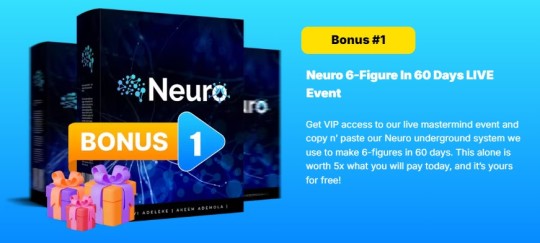
👉 Click Here for Get Instant Access Neuro 🖰 >>
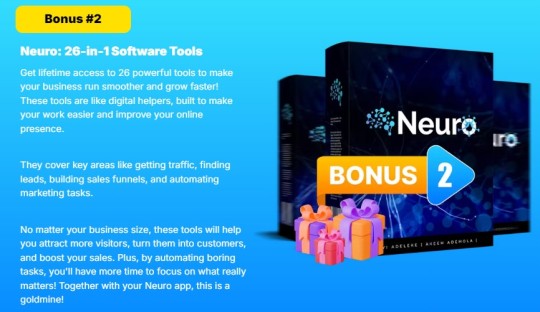
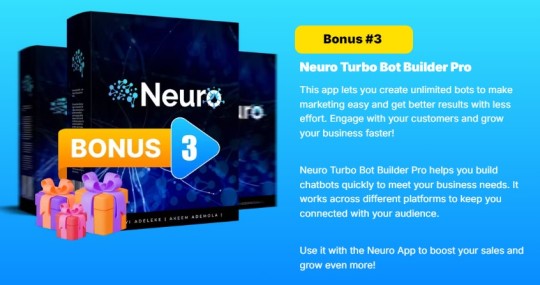
👉 Click Here for Get Instant Access Neuro 🖰 >>
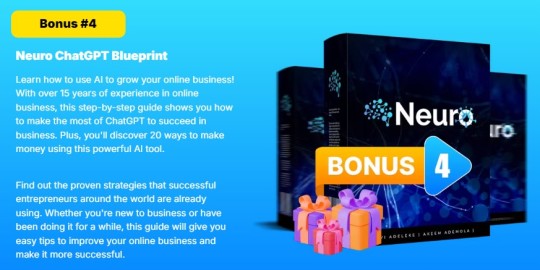
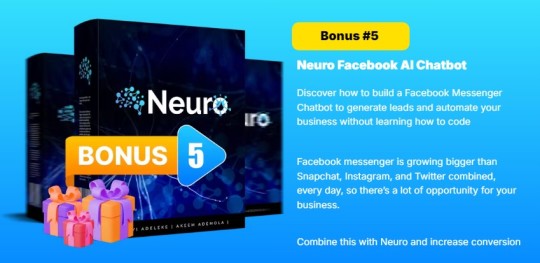
👉 Click Here for Get Instant Access Neuro 🖰 >>
🔥 Discounts and Special Deals
Early Bird Offer: Get 20% off during the launch week.
Bundle Discount: Save up to 30% by purchasing the full OTO package.
Use Coupon Code: 30% Off Cyber Monday Offer For The First 25 People!
🚀 Why Choose Neuro Review?
Saves time with automation.
Boosts productivity and engagement.
Offers versatility with content and video creation tools.
👉 Click Here for Get Instant Access Neuro 🖰 >>
💬 Final Thoughts
Neuro Review is an excellent choice for anyone looking to streamline content and video marketing efforts. With its advanced features and competitive pricing, it's a must-have tool for modern marketers. 🌟

👉 Click Here for Get Instant Access Neuro 🖰 >>
Frequently Asked Questions!
Q. Do I need any experience to get started?
None, all you need is just an internet connection.
And you’re good to go
Q. Do I need to purchase anything else for it to work?
Nop, Neuro is the complete thing.
You get everything you need to make it work. Nothing is left behind.
Q. Is there any monthly cost?
Depends, If you act now, NONE.
But if you wait, you might end up paying $997/mo
It’s up to you.
Q. How long does it take to make money?
Our average member made their first sale the same day they got access to Neuro.
Q. What if I failed?
While that is unlikely, we removed all the risk for you.
If you tried Neuro and failed, we will refund you every cent you paid
Q. How can I get started?
Awesome, I like your excitement, All you have to do is click any of the buy buttons on the page and secure your copy of Neuro at a one-time fee
👉 Click Here for Get Instant Access Neuro 🖰 >>
#apollo neuro review#apollo neuro#neuro review#review#nclex neuro review#apollo neuro reviews#apollo neuro device#neuro#neuro nclex review#brooks neuro review#reviews apollo neuro#reviews#reviews of apollo neuro#apollo neuro review reddit#apollo neuroscience review#nclex review neuro disorders#neuro disorders nclex review#apollo review#neurogum review#apollo neuro review: hrv training with vibration#apollo neuro band#board review#nclex review#marketing#affiliatemarketing#onlinemarketing#software#preview#digitalmarketing
2 notes
·
View notes
Text
Understanding the Difference Between a Website and a Web Page: A Complete Guide
Understanding the Difference Between a Website and a Web Page: A Complete Guide
In today’s digital landscape, terms like website and web page are used interchangeably, often causing confusion among businesses and individuals seeking an online presence. However, as a business owner or a digital marketer, understanding the difference is essential for creating an impactful online strategy.
At KSoft Technologies, where we specialize in website development, digital marketing, and SEO services, we often encounter this question from clients. This guide not only simplifies the distinction between a website and a web page but also explores their technical aspects and how they align with your business goals.
What is a Website?
A website is a collection of interlinked web pages hosted under a single domain name, designed to serve a specific purpose. Think of it as a digital storefront or an online hub that provides a comprehensive experience to users. Websites can vary significantly based on their type and functionality:
Corporate Websites Ideal for businesses aiming to showcase their products, services, and achievements. For example, the KSoft Technologies website highlights our expertise in areas like SEO, app development, and web design.
E-Commerce Websites Platforms like Amazon or Shopify allow businesses to sell products directly to customers. These websites integrate payment gateways, inventory management systems, and customer service functionalities.
Portfolio Websites Focused on showcasing individual or business achievements, these websites are ideal for freelancers or creative professionals.
Landing Pages Dedicated pages within a website that focus on lead generation and conversions, often used in digital marketing campaigns.
Blogs and Forums Content-centric websites aimed at providing information, engaging with communities, or building authority in a niche.
Technical Structure of a Website
A website comprises:
Domain Name: The unique address users type in to access the site (e.g., ksofttechnologies.com).
Hosting Server: Where all the data and files of the website are stored.
Content Management System (CMS): Tools like WordPress or Joomla that allow users to create and manage content.
Backend and Frontend: The backend involves server-side scripting (e.g., PHP, Python), while the frontend includes design elements (e.g., HTML, CSS, JavaScript).
What is a Web Page?
A web page is a single document within a website, identifiable by its unique URL. For example, on ksofttechnologies.com, the “Contact Us” page or “Services” page is a web page.
Types of Web Pages
Static Pages Content remains the same unless manually updated. They’re ideal for information like company profiles or mission statements.
Dynamic Pages Content is fetched from a database and changes based on user interaction. Examples include dashboards or search results pages.
Landing Pages Specifically designed for marketing campaigns, focusing on a single product, service, or call to action.
Blog Posts Individual articles or write-ups focused on specific topics within a blog section of a website.
Technical Structure of a Web Page
Each web page includes:
URL Structure: For example, https://ksofttechnologies.com/services.
HTML Markup: Defines the structure and content of the page.
CSS and JavaScript: For styling and functionality.
Metadata: Helps search engines understand the page content.
Key Differences Between a Website and a Web Page
Definition
Website: A collection of multiple interlinked web pages.
Web Page: A single document within a website.
Scope
Website: Broader; provides comprehensive information or services.
Web Page: Narrower; focuses on a specific topic or purpose.
URL
Website: Main domain name (e.g., ksofttechnologies.com).
Web Page: A subset URL (e.g., /services, /about-us).
Interactivity
Website: Enables complex user interactions.
Web Page: May have limited or single-point interactions.
Purpose
Website: Serves as the entire digital presence.
Web Page: Addresses a specific intent or question.
How Websites and Web Pages Work Together
To draw an analogy, a website is like a library, while web pages are the individual books or chapters within it. Each web page serves a specific purpose and contributes to the overall functionality of the website.
Example from KSoft Technologies
Website Level: Visitors land on ksofttechnologies.com, where they see an overview of our services like web development, app design, and SEO consulting.
Web Page Level: When they click on "Digital Marketing," they are directed to a dedicated page detailing our strategies, success stories, and packages.
Why Understanding the Difference Matters
For businesses, distinguishing between a website and a web page is crucial for:
Better SEO Strategy Search engines like Google evaluate websites and individual web pages differently. Optimizing individual pages for keywords (e.g., “website development services”) improves rankings and traffic.
User Experience Creating well-structured websites and easy-to-navigate web pages ensures a seamless user journey.
Content Strategy Knowing the role of each web page within your website helps in creating targeted and engaging content.
SEO Best Practices for Websites and Web Pages
Keyword Optimization Include relevant keywords like “website development,” “SEO services,” and “digital marketing agency” in titles, headings, and content.
Internal Linking Link related web pages within your website to improve navigation and reduce bounce rates.
Responsive Design Ensure your website and all web pages are optimized for mobile devices.
Page Load Speed Use tools like Google PageSpeed Insights to identify and fix issues.
Content Quality Provide valuable and actionable content for visitors, such as this guide explaining technical concepts.
How KSoft Technologies Can Help
At KSoft Technologies, we understand that your website is the cornerstone of your digital presence. Whether you need a user-friendly corporate website, high-converting e-commerce platform, or optimized web pages for SEO, our team of experts is here to help.
Our services include:
Website Design and Development: Tailored to your brand and business goals.
SEO Services: Ensuring your web pages rank high for targeted keywords.
Content Strategy: Helping you create engaging, keyword-rich content for better rankings and user retention.
Conclusion
While a website is the broader digital presence, web pages are its building blocks. Understanding the distinction between the two helps in planning and executing a robust online strategy. By leveraging the expertise of KSoft Technologies, you can ensure that your website and web pages work seamlessly to drive traffic, generate leads, and grow your business.
#ecommerce#web design#webpage#website#branding#web development#erp software#adobe#seo services#google ads
3 notes
·
View notes
Text
Making a Website: A Beginner’s Guide
Creating a website is one of the most powerful ways to build an online presence. Whether you want to promote your brand, grow your business, or share your personal blog, making a website can make a significant impact. Here’s a beginner’s guide to help you navigate the essential steps and make the process smoother.
1. Define the Purpose of Your Website
Before you start, it’s crucial to clearly define the purpose of your website. Are you building an e-commerce store, a blog, or a portfolio site? Understanding your goals will help guide your design choices, content strategy, and the overall structure of your website. Knowing the purpose is essential to making a website that resonates with your audience.
2. Choose the Right Platform
Selecting the right website platform is key to achieving a user-friendly and professional website. Platforms like WordPress, Wix, and Squarespace offer various templates and customization options, but if you want full control, consider creating a custom website. For more insights on choosing a platform, check out Making a Website.
3. Prioritize User Experience and Design
A well-designed website should be easy to navigate and visually appealing. Make sure to create a layout that guides visitors smoothly through your content. Focus on mobile responsiveness, intuitive menus, and fast loading speeds to keep users engaged. Making a website that prioritizes the user experience can lead to higher visitor satisfaction.
4. Optimize for SEO
To increase visibility, ensure your website is SEO-friendly from the start. Use relevant keywords, optimize image sizes, and write clear meta descriptions. By paying attention to these SEO basics, you can help your website rank better on search engines, attracting more visitors. These steps are crucial in making a website that stands out.
Creating a website is a journey that can transform your online presence. Remember, the key to success lies in setting clear goals, selecting the right tools, and prioritizing the user experience. For more tips on building and optimizing your website, don’t forget to explore the resources available at Making a Website.
2 notes
·
View notes
Text
Boost Your Online Presence with a WordPress Site
WordPress is a leading content management system (CMS) used by businesses, bloggers, and creators worldwide. With its user-friendly interface, customization options, and extensive plugin library, WordPress enables website owners to create a visually appealing, functional site without needing advanced coding knowledge. In this article, we’ll explore the benefits of using a WordPress site and offer tips to enhance its SEO, ensuring you’re on track to increase your online visibility and reach.
Why Choose WordPress for Your Site?
Ease of Use WordPress is designed for all experience levels. Its intuitive dashboard lets users manage content, images, and plugins easily, making it simple to maintain and update. Plus, with thousands of themes and plugins available, users can tailor their site’s appearance and functionality to align with their brand and goals.
Flexibility and Customization WordPress offers a variety of themes and plugins to match any industry or style. Whether you’re launching a portfolio, eCommerce store, or blog, WordPress provides flexible design options. With plugins like WooCommerce, you can turn your WordPress site into an online store. For added customization, many themes support page builders like Elementor and Divi, which enable drag-and-drop editing without coding.
SEO-Friendly Features WordPress is inherently SEO-friendly, offering features such as customizable permalinks, mobile-responsive designs, and support for structured data. Optimizing these elements enhances your site’s discoverability on search engines. WordPress also makes it easy to manage SEO-related tasks, especially when paired with the right plugins.
How to Optimize Your WordPress Site for SEO
To fully leverage WordPress for SEO, follow these essential tips:
Use an SEO Plugin Plugins like Yoast SEO and Rank Math provide comprehensive tools to optimize meta tags, sitemaps, and content readability. They guide you in adding keywords, optimizing images, and creating a structured site map that helps search engines crawl and index your site more efficiently.
Optimize Page Speed Site speed is a crucial ranking factor. Optimize images using plugins like Smush or Imagify to reduce file sizes without compromising quality. Use a caching plugin, such as WP Rocket or W3 Total Cache, to improve load times by storing static versions of your pages. A faster site enhances user experience and ranks better on search engines.
Mobile Responsiveness With mobile searches outpacing desktop, having a mobile-friendly site is essential. Most WordPress themes are designed to be responsive, but always check how your site displays on mobile devices. Google’s Mobile-Friendly Test can help you ensure your site provides a seamless experience on all screens.
Optimize Permalinks and URLs By default, WordPress offers several permalink structures. Choose a structure that includes keywords and is easy to read, such as "Post name." For example, change URLs like “mysite.com/?p=123” to “mysite.com/wordpress-seo-tips” to improve clarity and relevance to search engines.
Use Internal and External Links Internal links guide users through your site, encouraging them to explore more content. They also help search engines understand your site's structure and content relationships. Additionally, linking to authoritative external sources can enhance your site’s credibility. Just ensure these links are relevant to your content.
Regularly Update Content Keeping your content fresh signals to search engines that your site is active and valuable. Update blog posts with recent information, check for broken links, and add new pages when relevant. Regular updates can boost your search engine ranking and engage returning visitors.
Focus on Quality Content Content is a major SEO factor. Create high-quality, valuable content targeting keywords relevant to your audience. Instead of keyword-stuffing, focus on naturally incorporating primary and secondary keywords to maintain readability and relevance.
Conclusion
A well-optimized WordPress site is a powerful tool to boost your online visibility. With easy-to-use plugins and a range of customization options, WordPress makes it simpler to maintain an SEO-friendly site. By following these best practices, you’ll improve search engine rankings, drive organic traffic, and strengthen your online presence. Whether you’re new to WordPress or a seasoned user, these tips will help you get the most out of your site.
2 notes
·
View notes
Text
How Digital Marketing Training Can Help You Start Your Own Business

Starting your own business in today’s digital age means navigating a complex online landscape. Consumers are constantly engaging online, which means a strong digital presence is essential for any new business. However, understanding and mastering the tools and strategies required for effective digital marketing can be challenging without the right training. This is where a digital marketing training institute becomes invaluable. With the right digital marketing skills, you can drive your business's growth from the ground up.
In this guide, we’ll explore how digital marketing training can provide a solid foundation for launching a business. By examining core skills, tools, strategies, and expert tips, you’ll understand how digital marketing training can be a game-changer for entrepreneurs.
1. Building a Strong Online Presence
The first and most essential step in creating a successful business is establishing a credible online presence. Digital marketing training teaches you the importance of branding, website development, and content creation, helping you build a brand that resonates with your target audience.
Personal Branding: Training will help you identify your unique value proposition and communicate it effectively.
Website Development Basics: Many digital marketing training programs cover web development basics, helping you create a user-friendly, SEO-optimized website.
Content Creation: Content is the backbone of any digital strategy. Learning how to create engaging blog posts, videos, and infographics will attract and retain customers.
Expert Tip:
Use free tools like Canva for graphic design and WordPress or Wix for creating a basic website to get started.
2. Understanding SEO to Attract Organic Traffic
Search Engine Optimization (SEO) is crucial to ensure that your business can be found by potential customers. A digital marketing training institute will provide comprehensive knowledge on how SEO works, including keyword research, on-page SEO, and technical SEO aspects.
Keyword Research: Learn to identify and target keywords relevant to your business that your potential customers are searching for.
On-Page SEO: Training will cover techniques like optimizing titles, headers, and meta descriptions to improve search engine rankings.
Technical SEO: Advanced training may include aspects like website speed optimization, mobile compatibility, and sitemaps, which are essential for ranking well on search engines.
Expert Tip:
Tools like Ahrefs, SEMrush, and Google Keyword Planner can assist in finding and analyzing keywords to help you rank higher on search engines.
3. Utilizing Social Media to Build Brand Awareness
Social media platforms are powerful tools for promoting a business, but effective social media marketing requires strategy. Digital marketing training will teach you to create engaging content, understand analytics, and develop ad campaigns to increase reach.
Platform Selection: Training will help you determine which social media platforms align best with your target audience (e.g., LinkedIn for B2B or Instagram for younger demographics).
Content Strategy: You’ll learn how to craft posts that engage followers, tell your brand’s story, and drive interactions.
Advertising Campaigns: Learn how to use paid advertising effectively on platforms like Facebook, Instagram, and LinkedIn, helping you reach a wider audience at a relatively low cost.
Expert Tip:
Use scheduling tools like Hootsuite or Buffer to manage and track your social media posts, saving time and ensuring consistency.
4. Harnessing Email Marketing for Customer Retention
Email marketing is a highly effective channel for keeping customers engaged and building long-term loyalty. Through digital marketing training, you’ll understand the nuances of email marketing, from list building to crafting effective email campaigns.
Building an Email List: Learn strategies for collecting customer emails through website sign-ups, social media, and landing pages.
Crafting Email Campaigns: Training often covers how to write compelling emails, create drip campaigns, and send personalized messages.
Analyzing Email Performance: You’ll learn how to use analytics to measure open rates, click-through rates, and conversions, enabling you to refine your strategy.
Expert Tip:
Platforms like Mailchimp and Constant Contact are user-friendly options for beginners, offering templates, analytics, and automation options.
5. Leveraging Content Marketing to Educate and Engage
Content marketing is an excellent way to establish authority in your field and attract customers through valuable content. A digital marketing training institute will help you understand how to create a content calendar, generate relevant topics, and repurpose content across different channels.
Creating a Content Plan: Training will teach you to create a strategic plan that includes blog posts, videos, podcasts, and infographics.
SEO-Optimized Content: Learn how to structure content to rank well on search engines, helping your business attract organic traffic.
Repurposing Content: With guidance, you can maximize content by repurposing a blog post into social media snippets, videos, and newsletters.
Expert Tip:
Try using tools like Grammarly for proofreading and Yoast SEO to optimize content for SEO directly within WordPress.
6. Understanding Analytics to Make Data-Driven Decisions
Knowing how to interpret data is crucial for evaluating the success of your digital marketing efforts. Most digital marketing training programs include a module on analytics, focusing on metrics that matter most to new business owners.
Google Analytics: Learn how to track website performance, including visitor demographics, behavior, and traffic sources.
Social Media Analytics: Training will guide you on using platform-specific analytics to measure reach, engagement, and conversion on platforms like Facebook and Instagram.
Conversion Rate Optimization (CRO): Understand how to analyze conversion rates and make adjustments to improve customer acquisition.
Expert Tip:
Set up Google Analytics and Google Search Console from day one to monitor performance and make informed decisions based on real data.
7. Running Effective Digital Advertising Campaigns
Digital advertising can give new businesses an instant boost by reaching specific demographics. A digital marketing training program will teach you how to run effective campaigns on platforms like Google Ads, Facebook Ads, and LinkedIn Ads.
Creating Ad Campaigns: Training covers campaign structure, audience targeting, and budgeting.
Retargeting Ads: You’ll learn how to use retargeting to re-engage potential customers who have already visited your site.
Analyzing Ad Performance: Most programs cover ad metrics, allowing you to understand cost-per-click (CPC), conversion rates, and return on ad spend (ROAS).
Expert Tip:
When starting, allocate a small budget for A/B testing on platforms like Google Ads or Facebook Ads to determine what works best for your target audience.
8. Developing a Holistic Digital Marketing Strategy
A successful digital marketing strategy combines multiple channels and tactics to drive brand awareness and sales. Digital marketing training provides an understanding of how each marketing channel works together and teaches you how to develop an integrated strategy that aligns with your business goals.
Setting Goals and KPIs: Training will help you define measurable goals and key performance indicators (KPIs) to track progress.
Aligning Marketing Channels: You’ll learn to integrate SEO, social media, content, and paid ads into a cohesive strategy.
Tracking Progress and Adapting: Training emphasizes flexibility, encouraging you to continuously assess and adjust strategies based on results.
Expert Tip:
Tools like Trello or Asana can help you organize your marketing tasks, assign deadlines, and track progress effectively.
9. Gaining Industry Insights and Keeping Up with Trends
Digital marketing is constantly evolving. Enrolling in a digital marketing training institute helps you stay current on trends, tools, and best practices, which is essential for success in a competitive business landscape.
Industry Updates: Many training programs offer regular updates on industry trends, such as AI in marketing, voice search, and algorithm changes.
Networking Opportunities: Being part of a training institute often allows you to network with industry professionals, opening doors for partnerships, mentorships, and collaborations.
Access to Resources: Training institutes often provide access to exclusive resources like webinars, workshops, and case studies that keep you ahead of the curve.
Expert Tip:
Follow reputable sources like Search Engine Journal and HubSpot for regular industry updates and best practices.
Conclusion
Starting a business can be daunting, but with the right digital marketing training, you’ll have the tools and knowledge to succeed. A digital marketing training institute equips you with essential skills, from SEO and content creation to analytics and advertising, that can help drive growth for your new business. With guidance on creating a solid online presence, engaging with customers, and making data-driven decisions, digital marketing training is a valuable investment for aspiring entrepreneurs. By understanding and leveraging digital marketing strategies, you can position your business for success in a rapidly evolving digital landscape.
#digital marketing#search engine optimization#social media marketing#smm#search engine marketing#seo
2 notes
·
View notes
Text
What is Headless WordPress and When Should You Use It? | Island Wizards

As businesses evolve and digital experiences become more sophisticated, traditional website setups are often not enough to meet modern demands. Enter headless WordPress—a flexible, high-performance solution that offers better control over both the front-end and back-end. If you're wondering when and why you should consider this approach, we’ve got you covered.
What is Headless WordPress?
In a traditional WordPress setup, the content management system (CMS) is tightly coupled with the front-end display, meaning the website's content and its design are intertwined. However, in a headless WordPress setup, the CMS is decoupled from the front-end. The “head” (front-end) is removed, allowing developers to use APIs to push content to various platforms like websites, mobile apps, or any digital interface.
In simpler terms, with headless WordPress, WordPress manages the back-end content, while the front-end is managed separately, usually using technologies like React, Vue.js, or Angular.
Benefits of Headless WordPress
Flexibility Across PlatformsHeadless WordPress allows you to push content to multiple platforms. Whether you're delivering content to a mobile app, a website, or even a wearable device, this system enables you to maintain a single content repository.
Faster PerformanceBy decoupling the front-end from the back-end, your site can load faster and more efficiently. Headless WordPress websites can often use faster, modern JavaScript frameworks for front-end rendering, improving user experience and speed.
ScalabilityFor businesses that plan to scale their online presence, headless architecture offers a future-proof solution. Content can be reused and distributed across different channels without major changes to the back-end.
Enhanced SecuritySince the front-end and back-end are decoupled, potential vulnerabilities in the front-end won’t necessarily compromise your back-end. This makes headless WordPress websites inherently more secure.
Customization FreedomUnlike traditional WordPress, where your design choices may be limited to available themes, headless WordPress allows complete freedom to design a custom front-end using the latest technologies.
When Should You Use Headless WordPress?
At Island Wizards, we recommend using headless WordPress in the following situations:
Multiple Channels: If your business requires content distribution across websites, mobile apps, and other platforms, headless WordPress is the way to go.
High-Traffic Websites: If you expect high levels of traffic and need your site to load lightning-fast, headless architecture can deliver optimized performance and better user experiences.
Complex, Custom Front-End: If you have specific front-end design requirements that can’t be easily handled by traditional WordPress themes, headless WordPress offers unmatched flexibility and customization.
Security Concerns: Businesses that are security-conscious may benefit from the enhanced protection offered by a decoupled system.
Headless WordPress at Island Wizards
At Island Wizards, we specialize in building headless WordPress websites that combine the power of a flexible back-end with modern front-end technologies. Our experts can help you create a lightning-fast, secure, and scalable website that meets the unique demands of your business.
If you're looking for a powerful, future-proof solution, headless WordPress is the way forward. Reach out to Island Wizards today to explore how we can tailor a headless WordPress solution to your needs.
Explore more about our service…https://islandwizards.com/blogs/tag/shopify-theme/
#headless wordpress development services#seo#island wizards#wordpress#shopify#shopify partner program#island wizards uk'#wizards island
2 notes
·
View notes
Text
WordPress developers In Sunshine Coast
Expert WordPress Developers in Sunshine Coast 🌞
Looking to build a dynamic and user-friendly website for your business? Look no further! Sunshine Coast boasts some of the finest WordPress developers who can turn your vision into a stunning digital reality. Whether you're a small business, startup, or established brand, WordPress offers unparalleled flexibility and functionality, perfect for creating a website that meets your needs. Here's why choosing local WordPress experts in Sunshine Coast can elevate your business!
Why WordPress? 🚀
WordPress is one of the most popular content management systems (CMS) in the world, and for good reason. It’s easy to use, SEO-friendly, and highly customizable. With over 40% of websites globally powered by WordPress, it’s clear that this platform is a favorite for businesses wanting a professional, responsive, and scalable website.
Sunshine Coast developers specialize in crafting custom WordPress websites tailored to your unique brand. From eCommerce solutions to corporate websites, they use the latest techniques and tools to make sure your website not only looks great but performs brilliantly!
Local Expertise, Global Impact 🌐
Hiring local WordPress developers in Sunshine Coast offers more than just proximity. These professionals understand the local market, know what appeals to your audience, and are in sync with the region's trends.
Local WordPress developers are also adept at ensuring your website is SEO-optimized, helping you reach your target audience, boost visibility, and improve conversions.
Custom Solutions for Every Business 🛠️
Whether you need a simple blog, a complex eCommerce platform, or a membership site, Sunshine Coast WordPress developers provide tailored solutions. They offer everything from custom theme development to plugin integration and maintenance services to ensure your website is always running smoothly. With a focus on responsiveness and mobile-friendly design, these developers ensure your website looks and functions flawlessly across all devices.
Ongoing Support & Maintenance 🛡️
Websites require regular updates and maintenance to ensure optimal performance. Sunshine Coast WordPress developers offer ongoing support to help with updates, security, and performance optimization. Whether it's fixing bugs or adding new features, their services guarantee your site stays fresh and secure.
Ready to Get Started? 📞
If you're ready to take your business to the next level, connect with professional WordPress developers in Sunshine Coast today. They’ll help you build a website that not only looks great but works hard for your business. Contact us at [Your Contact Info] and let’s create something amazing together!
Looking to discuss your project in more detail? Call us at [+61 418501122] or send an email to [[email protected]] and visit our website [https://sunshinecoastwebdesign.com.au/]! We’re ready to help you build a website that drives results! 💻
2 notes
·
View notes
Text
Free writing tools and services
you don't need to spend a lot of money(or any) on expensive software or tools to improve your craft. There are plenty of free resources available online that can help you organize your thoughts, stay inspired, and enhance your writing skills. Here are some of the best free writing tools for poets that i use for free, i hope they help!

Google Docs - Google Docs is a free word processing software that allows you to create and edit documents online. It's a great tool for poets who want to organize their work into different files and access them from anywhere with an internet connection.(I'm sure most of you know it)
Grammarly - Grammarly is a free online grammar and spell-checker that can help you improve your writing skills. It can detect errors in grammar, punctuation, and spelling, and also provides suggestions for more effective sentence structure.
Canva - Canva is a free design tool that allows you to create visually appealing images to accompany your poetry. You can choose from a variety of templates, fonts, and graphics to create eye-catching designs for social media or print.
Poets.org - Poets.org is a website that features articles, interviews, and poems from both new and established poets. It's a great resource for discovering new poets and staying up-to-date on the latest trends in poetry.(this is i found to be really great)
Duotrope - Duotrope is a free online database of literary magazines and journals that accept poetry submissions. You can use it to search for markets, track your submissions, and even get personalized submission recommendations based on your writing.
RhymeZone - RhymeZone is a free website that helps poets find rhyming words and synonyms for their poetry. It's a great tool for those who are struggling to find the perfect word to complete a line.
Poem-a-Day - Poem-a-Day is a free email subscription service that delivers a new poem to your inbox every day. It's a great way to discover new poets and stay inspired.
Writer's Digest - Writer's Digest is a free online resource that features articles, tips, and advice for writers of all kinds, including poets. You can find articles on everything from writing prompts to getting published.
Poet Assistant - Poet Assistant is a free mobile app that provides prompts, word suggestions, and other tools to help poets overcome writer's block and improve their writing.
WordPress - WordPress is a free blogging platform that allows you to create and publish your poetry online. You can customize your blog's design, share your work with a wider audience, and even connect with other poets through the platform's social features.
These free writing tools for poets can help you develop your writing skills, stay inspired, and connect with other writers. Give them a try and see how they can enhance your poetry writing journey!
#poetry on tumblr#writers of tumblr#writers and poets#new poets society#poets on tumblr#writing tool#writing resources#writing help#poems on tumblr#poetry#poems and poetry#writer problems#writing problems#writing advice
49 notes
·
View notes